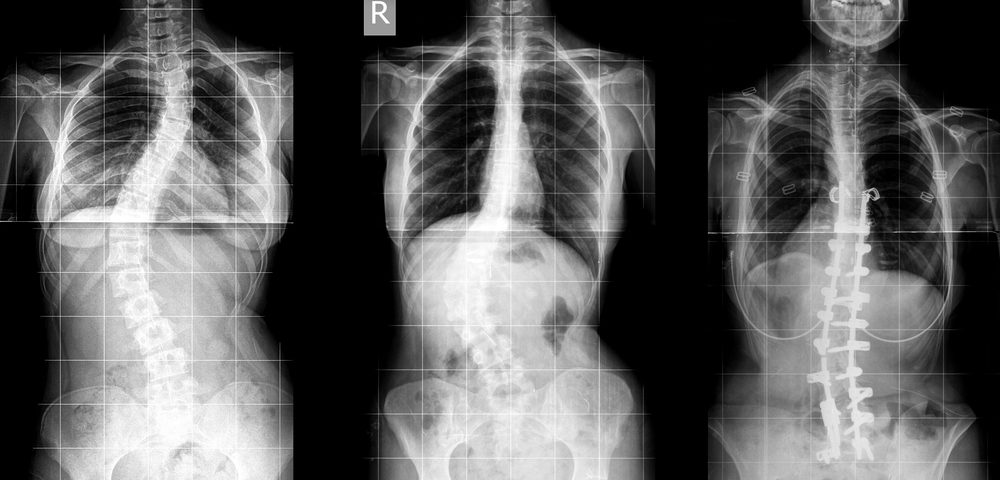A 16 year young boy studying in 11 standard in Delhi had been experiencing a hunchback deformity for the last 3 years. His deformity was so prominent and progressive that he started feeling shy and would refuse to got to school too. Therefore, it not just affected his personality but studies as well. On investigations, the boy was diagnosed with a deformity of the spine known as Kyphosis.
Kyphosis can spread due to a congenital problem in spine and the deformity can progress further if not treated on time, it can increase pressure on the lungs and the heart, which can result in repetitive sickness with lung infections and morbidity.
Hunchback or Hunched back is a condition where there is exaggerated forward rounding of the upper back. In a typical case, the head and shoulders shift forward, the chest curls inwards and the spine crunches from a healthy S-curve to a less healthy C position as the pelvis tilts forward. Though the hallmark of old age; hunchback is a condition commonly seen among youth and young teenagers these days, especially the ones between 9-18 years old. Blame it on their sedentary lifestyle or poorer posture due to spending more time on small digital screens. And, the situation is alarming because what initially starts out as a mild case of bad posture when children are young, slowly begins to develop into hunched back and shoulders.
Causes and Concern
The main cause of hunchback is weak abdominal muscles from years of sitting in a hunched position. This places uneven pressure on the discs, the cushioning pads between the bones of the lower back, causing them to become compressed and painful. Patients having osteoporosis develop age-related hunchback too. And not many people are aware that hunchback condition, if not treated, progresses into the full-fledged hyperkyphosis of a dowager’s hump, and numerous other health issues alongside. Also, as hunched back compresses the rib cage, so resultantly, many people with hyperkyphosis suffer from shortness of breath and other breathing issues. In extreme cases and especially women suffering osteoporosis are more likely to suffer fractures; the more hunched the back, the greater the risk. It may also cause anxiety and depression, increased risk of cardiovascular or lung disease, and Type 2 diabetes.
Stages of Hunchback
The hunched back of dowager hump develops in stages, and the earlier you take step to improve or reverse dowager’s hump, the greater the results. The early stages of hyperkyphosis appear as a forward head posture, in which the head moves forward of the gravitational center line of the body. As the head moves forward, the shoulders typically begin to get hunched as well. At this stage the hunched back can be easily improved or even reversed. Once the condition grows into the hunched back of a full-fledged dowager’s hump, it becomes more difficult to work with, and for best results, you’d be advised to seek help of a professional physiotherapist, or yoga therapists.
Cure and Therapies
With children and youth, it's important that they learn the correct way to sit, especially when they’re using a computer. Parents should teach them to keep their arms relaxed and close to their body and place arms on the desk when typing. Also, make sure the top of the screen is in sync with the eyebrows and the chair is titled slightly forward, allowing the knees to be lower than the hips and the feet to be flat on the floor. Using a laptop or tablet away from the desk will encourage a bad posture. So avoid teenagers to use these portable gadgets.
For youth and elderly people, exercises such as stretching exercises often help to improve the flexibility of the spine. Youngsters can emphasise on strengthening the abdominal muscles as they help to improve the posture. Practicing yoga is considered beneficial for improving and developing good body posture. Yoga also helps in improving balance; strengthening the core muscles and helping you maintain a proper body alignment.
While standing proper posture can be achieved by finding your center. A proper standing posture also gives you an air of confidence. When sitting, always keep your shoulders straight and squared, your head upright, and your neck, back, and heels should be in alignment. Always keep both feet on the ground. Similarly, take care of your posture while driving and performing other day-to-day activities.
Surgical procedures are recommended and done only if the curvature of the spine is exaggerated such as seen in severe hunchback and especially if it is pinching the spinal cord or the nerve roots. Surgery helps in reducing the degree of the hunchback curvature. The most common procedure done is called spinal fusion where two or more of the affected vertebrae are permanently connected. The complications for spinal surgery are quite high and include: Infection, bleeding, pain, arthritis, nerve damage and degeneration of the disc. A second surgery may be required if the initial surgery has failed to rectify the problem.
Therefore, understanding the importance of good posture at a very early age is essential to maintain a healthy mind and body.
Dr Satnam Singh Chhabra
Director Neuro Spine Surgery, Sir Gangaram Hospital
Source : Kashmir Monitor , 2nd Feb 2017
Source : Kashmir Monitor , 2nd Feb 2017



